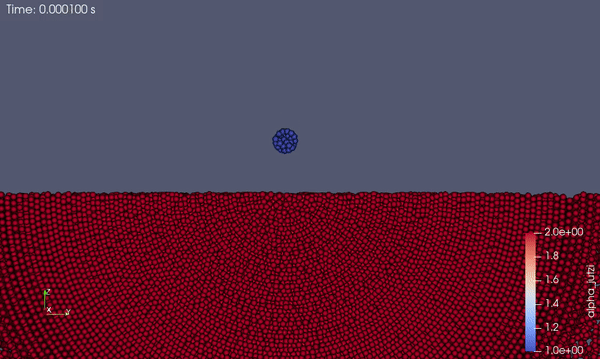
PLANETARY DEFENSE
How lucky are we to be here? I'm not just talking about the (exceptional?) inception of life on our planet, but also on the fact that we survived to discuss our very existence. Our planet is constantly bombarded by countless celestial objects. Back when the Earth formed, it may have been advantageous, since these countless impacts may have brought to our planet its oceans, and even the necessary ingredients for life's genesis. But after life evolved, large scale impacts were also the harbingers of destruction, or so it is believed. Now, for the first time in history, we are a uniquely capable species that is not powerless in the face of this cataclysmic threat. We are able to take active steps, avoiding a faith similar to that of the dinosaurs.
Several organizations are working towards that goal. The UN office for outer space affairs (UNOOSA) holds regular meetings and decides on global defense policies. Israel is also represented, as the Israeli space agency has its own delegate representative in these discussions. Several space missions have already been dispatched, in order to investigate the asteroid threat, and ways to avert it.
Human kind's first main goal is to map the sky. We need to account for any large object that may potentially collide with our planet. Small objects collide with our planet yearly, even daily, but these kind of encounters are not really dangerous. We're out seeking for the really big asteroids, those which can destroy a city, a country, or more. Luckily, for telescope observations, the bigger the better our chances of detection. At present, we already have surveys that are capable of mapping the sky, and we do not know about any imminent threat to our planet. That's good, because we have time to prepare.
The first thing we need to know is what type of threats are lurking out there, like comets and asteroid, and what is the difference between their inner properties. We can't fight what we can't even characterize. Once we have better knowledge of their internal properties, we can find ways to avert or destroy them. Building on past space missions, the Hayabusa2 and OSIRIX-REx space missions have already been able to excavate the surface of a couple of asteroids and learn a little about what they are made of. The DART mission, after fulfilling its goal last year, is the first mission of its kind. It successfully impacted a small asteroid to divert it off its course. Remote observations were performed, but the really interesting science is soon to come. The HERA mission, of which I am a member, is a European follow-up mission. It is going to rendezvous with the same asteroid that DART impacted, analyze the results of the collision and study the properties of the asteroid using highly sophisticated instruments.
The team in which I am a member consists of theoretical and experimental scientists, and tries to constrain the properties of the asteroid by performing simulations of the impact, comparing these simulations to various observables. Among the group, three different impact codes are typically used, and one of these is utilized by my collaborators and myself. This code is described here, with several other examples:
In a recent study, we hope to have improved one of the main relations that feed into impact codes -- the crush curve. Small bodies are porous. Consequently, some of the energy of the impact goes to compressing the pore space, which means that less energy is transferred to the impact ejecta. The compression is largely determined by this crush curve, which defines the relation between the porosity and the pressure of the impact. In the past, we have used the same crush curve that is commonly used in the literature by other modelers. I instigated a new study, assembling a large group of scientists from several institutions in order to review this past choice, believing that we might find ways to improve on it. The investigation involved a thorough review of past crushing experiments and conducting several new complementary experiments in the lab. We found that the previous choice for the crush curve could at times underestimate or overestimate compression. We suggested a new crush curve, that closely matches the empirical data, and performed benchmarking impact simulations to test and compare both options. The simulation outcomes have verified our initial concerns, and showed that more compression took place by replacing the old crush curve. We are hoping that this would trigger a wide discussion within our community as to the proper choice for various future impact applications. Below you can see what these simulations look like, for the DART impact onto the surface of the asteroid, here showing the first fraction of a second. Blue pixels belong to the projectile, and are fully compressed, while red pixels correspond to the initial porosity of (here) 50%.
